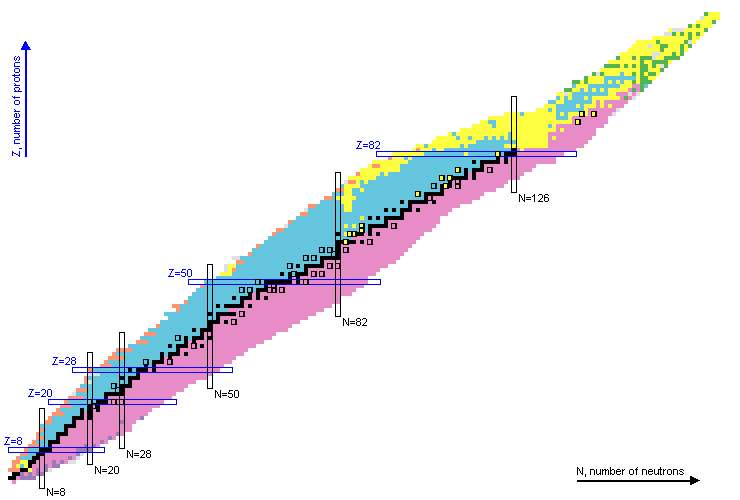

 |
 |
|
NNDC Databases: NuDat | NSR | XUNDL | ENSDF | MIRD | ENDF | CSISRS | Sigma |
|
|
Spontaneous FissionThe splitting of an undisturbed nucleus into 2 or more nuclei is known as spontaneous fission. Proton, neutron, alpha and cluster decay are extreme forms of spontaneous fission, but defined as different types of nuclear decay. Spontaneous fission has been observed in heavy nuclei, Z > 82. Nuclei that exhibit SF decay are indicated with a green background in the chart of nuclei:  Spontaneous fission originates from two facts:
|